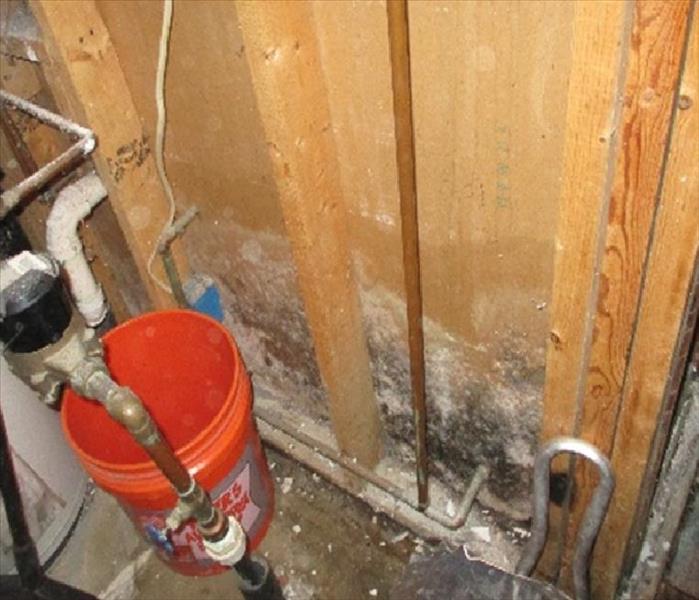Archived Mold Remediation Blog Posts
Can Mold Spread Through Air Ducts?
11/30/2018 (Permalink)
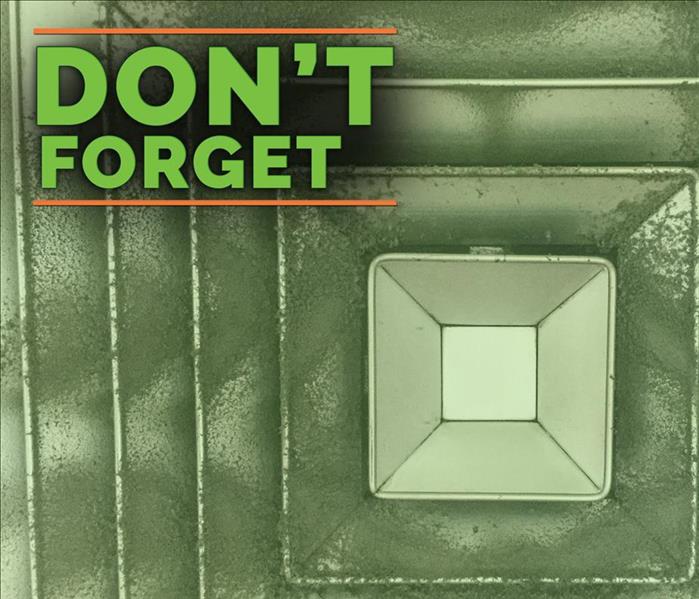 Clean your HVAC system to prevent the presence of mold
Clean your HVAC system to prevent the presence of mold
Mold spores are everywhere, but colonies cannot form without moisture and nutrients. Several parts of an HVAC system may be prone to developing and spreading mold. Find out how HVAC cleaning can reduce the likelihood that mold will spread through air ducts.
How Does Mold Get Into an HVAC System?
Mold spores thrive in moist places. Several parts of an HVAC system are likely to support the growth of colonies:
- Condensate drip pans
- Cooling coils
- Duct work
Dirt and mold spores can adhere to surfaces within air ducts. It is important to eliminate the presence of mold in a ventilation system, as cooling and heating can spread spores throughout a structure. If you suspect that mold may be present, turn off the system and schedule a cleaning as soon as possible.
How Do Experts Perform HVAC Cleaning?
Mold cleanup experts have access to commercial vacuums and EPA-registered mold removal disinfectants and inhibitors certified for use in HVAC systems. These specialists will likely:
- Wear personal protective equipment including a mask or respirator
- Clean the affected areas and use a high-powered vacuum to remove mold
- Apply mold inhibitor approved for HVAC use
Every component of the cooling and heating system should be cleaned and treated to prevent mold from recurring. Cleaning vents may prevent mold from spreading.
Will Cleaning Eliminate Mold?
Cleaning can help to eliminate the presence of mold in an HVAC system. Even though spores will continue to be present in the structure, they should be less likely to multiply. It is necessary to take measures that will prevent mold from returning and closely monitor the system. Schedule another inspection if you smell a musty odor or see any evidence of mold.
Mold can form and spread throughout an HVAC system. For the best results, commercial property owners should hire an HVAC cleaning and mold mitigation service in Newton, NJ.
Does your town have a issue with mold?
11/20/2018 (Permalink)
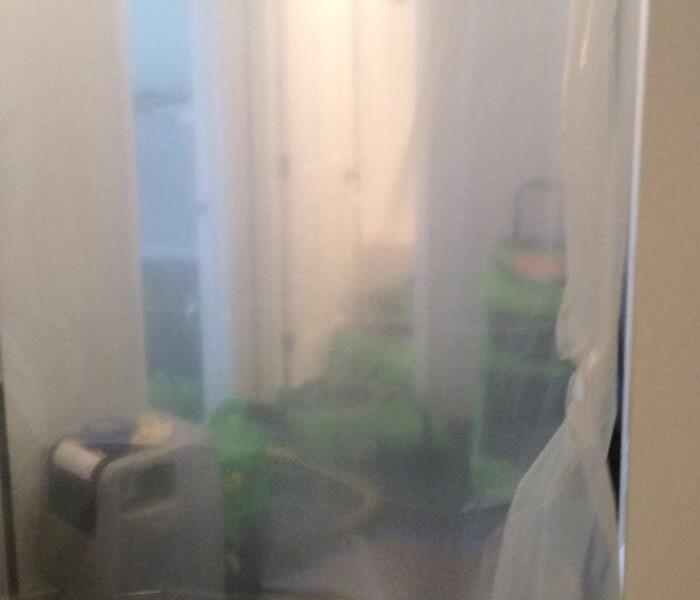 Containment is important when cleaning during a mold and water job.
Containment is important when cleaning during a mold and water job.
Microscopic mold spores naturally occur almost everywhere, both outdoors and indoors. This makes it impossible to remove all mold from a home or business. Therefore, mold remediation reduces the mold spore count back to its natural or baseline level. Some restoration businesses advertise “mold removal” and even guarantee to remove all mold, which is a fallacy. Consider the following mold facts:
- Mold is present almost everywhere, indoors and outdoors.
- Mold spores are microscopic and float along in the air and may enter your home through windows, doors, or AC/heating systems or even hitch a ride indoors on your clothing or a pet.
- Mold spores thrive on moisture. Mold spores can quickly grow into colonies when exposed to water. These colonies may produce allergens and irritants.
- Before mold remediation can begin, any sources of water or moisture must be addressed. Otherwise, the mold may return.
- Mold often produces a strong, musty odor and can lead you to possible mold problem areas.
- Even higher-than-normal indoor humidity can support mold growth. Keep indoor humidity below 45 percent.
If your home or business has a mold problem, SERVPRO of Dover/Stillwater can inspect and assess your property and use our specialized training, equipment, and expertise to remediate your mold infestation.
Mold Vs. Mildew: 3 Tips for Spotting the Difference
9/11/2018 (Permalink)
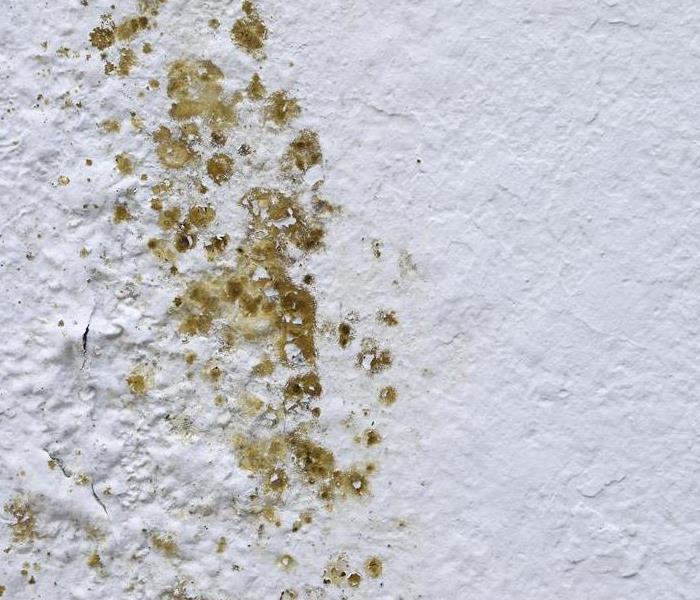 Identifying the difference between mold and mildew from a professional
Identifying the difference between mold and mildew from a professional
Keeping up with the household chores at your Dover, NJ, residence can be a challenge. From washing dishes to cleaning carpets and scrubbing out your bathtub, there is much to maintain. One particularly challenging chore can be targeting and eradicating mold and mildew in your home. Because mold damage can happen fast if it is not handled properly, knowing how to spot the difference between the two can help you resolve the issue before it gets out of hand.
1. Appearance
Mildew is typically white or yellow and may have a powdery surface appearance. It may also turn darker as it ages. Like mold, mildew growth will likely spread if it is not treated.
2. Location
You may find mildew in your bathroom or any other room with a high humidity level. While most strains of mold also thrive in this environment, mildew is more likely to grow on flat surfaces, such as shower tiles, windowsills and shower curtains. Mold is more likely to hide under your bathroom sink cabinet or around the base of a leaky toilet, where consistent dampness allows it to grow.
3. Cleanup Effort
One of the surest ways to tell mold from mildew is how easily it cleans up. Mildew usually grows on the surface of what it occupies and can usually be wiped away with a household cleanser and sponge. Mold is typically tougher to clean up and may require the services of a mold damage and remediation company. Once mold growth takes hold on a surface, it usually cannot be resolved with bleach or other cleansers and may even thrive if you introduce water-based cleaning products. Overall, mold removal is best left to experts.
It can be difficult to tell mold from mildew. However, since mold damage can be costly to reverse, it can benefit you as a Dover, NJ, homeowner to be able to spot the differences.
For more on Dover click here.
The Disgusting Truth About Lawn Slime
5/10/2018 (Permalink)
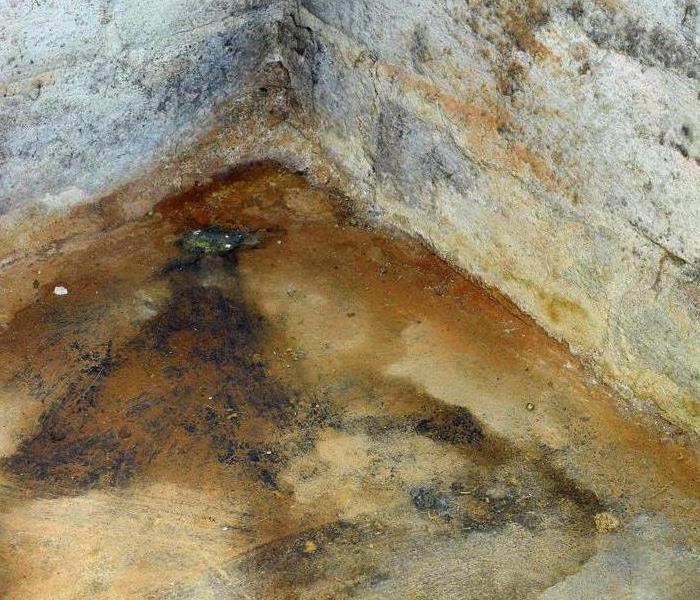
Lawn slime sounds like something out of a Ghostbusters film, but what it actually is is slime mold: a saprophytic fungus that feeds on the dead organic matter. It’s hard to miss slime mold on your Dover, NJ, lawn when it’s often brightly colored and covers everything in slimy patches. So how can you get rid of outdoor mold, and make sure it never comes back?
Tips for Getting Rid of Lawn Slime
Once you’ve got lawn slime, all you can think of is getting rid of it. Here are just a few remedies for this pervasive outdoor pest:
• Rake up debris and ground cover. The thatch covering your lawn is often made of dead leaves, grass, and twigs – and is perfect food for slime mold. When you’re raking it up, you’ll also take a good deal of the mold with it.
• Trim your shade trees. Dark areas let slime mold proliferate, while sun dries it out and kills it.
• Switch to a sandy topsoil. Lawn slime has trouble taking root in sandy soil, but there are plenty of attractive lawn grasses that can still thrive even where slime mold can’t.
• Avoid “natural” remedies. While you may hear that tea tree oil and other natural remedies can help kill slime mold, it’s more likely to kill your grass. Killing your grass just gives the slime mold more to feed on, and can actually help it proliferate.
Preventing Lawn Slime in the First Place
The best offense is a good defense, and one great way to get rid of slime mold is to defend against it in the first place. Since slime mold feeds on dead matter, routinely clean your lawn of debris and rotting leaves. Also, don’t over-water your lawn; too much moisture creates perfect conditions for slime mold to grow. If you’re struggling to figure out ways to free your lawn from mold, a professional consultation with mold remediation specialists may help. For more information, visit http://www.SERVPROdoverstillwater.com//
Types of Mold Commonly Found in Homes
3/31/2018 (Permalink)
It doesn’t matter where you live or what style of home or building you own or occupy, flooding can affect anyone. The severity of flooding can vary considerably, but one thing is for sure: water damage isn’t something you should take lightly. Mold growth is among the many concerns you can have from damage due to leaking water or flooding. It’s important to recognize the various types of mold you can find at home or at work.
Aspergilius
It’s not unusual to find this type of mold in homes or in business buildings in Dover, NJ. It is often found in some of the following places:
- In showers, sinks or other bathroom settings in mildew
- In starchy foods such as potatoes or bread
- On or inside of indoor or outdoor plants or trees
- On pillows in your home or in hotels
Alternaria
You’ll usually find this type of mold growth in Dover, NJ, at all times of the year with the exception of winter. If you’re outside during the summer months, there’s a good chance you’ll come into contact with alternaria. It has as many as 50 species and can reach high levels of spores within a small area.
Black Mold
This is arguably the most harmful form of mold you’ll see at home. It is also known as stachybotrys. Black mold can grow in areas of high humidity, such as a bathroom with a shower or basement with a leak. Usually, you will spot black mold in your carpet, drywall or subflooring. If you happen to see this form of mold, call a professional immediately and have an expert inspect and clean the area.
Mold growth isn’t uncommon in homes and businesses, but it isn’t something you should ignore. If you detect any of these types of mold, especially black mold, you should get a specialist to remove it as soon as possible.
MOLD PREVENTION- PLACES TO CHECK FOR MOLD
2/5/2018 (Permalink)
The best strategy to fight mold is to try to prevent it in the first place. In order to do that we need to understand that mold needs three things in order to grow; Oxygen, Food, and Water. These ingredients are virtually anywhere therefore it is necessary to take pay attention to those places in your home where it could appear and spread. Some places in your home where you should keep an eye for mold are:
The Walls; Mold can appear in the walls of your home due to plumbing leaks. It can growth from the inside, behind the wall or on the wall itself where it can be visible. The problem with the first two is that it can happen without you knowing is even there, by the time that is visible it usually means it is pretty bad and it can be dangerous (Mold is taking over).Therefore, try to check your walls for signs like discoloration and peeling of the paint.
Basement; some of the reasons for mold to growth in your basement may be flooding issues or the condensation from the pipes created from the cold during winter. The exposed beams, the walls, (sometimes carpet), and furniture are usually the items where mold can grow in your basement. We recommend to check this area of your home once a month or as often as you can, to avoid having issues with mold due to not knowing what is happening there.
Carpet; Mold can growth in carpets due to leaks in the house, flooding, and even pet urine. The problem with the carpet is that sometimes the mold grows beneath it and when it becomes visible it means that it is severe by that moment. You should inspect your carpet around the house to make sure that no water, or any moisture is in it to prevent mold to growth and spread.
Finally, our last recommendation is to always address any water problems that you have right away, leaks, floods, or standing water, because these scenarios are the perfect opportunity for mold to growth. If you ever experience a water loss please consider a professional restoration company like SERVPRO of Dove/ Stillwater to help you to restore your home and to prevent mold to appear. Remember prevention is the key to keep mold away from your property and your health.
Steps to Prevent Mold During the Winter Time
1/30/2018 (Permalink)
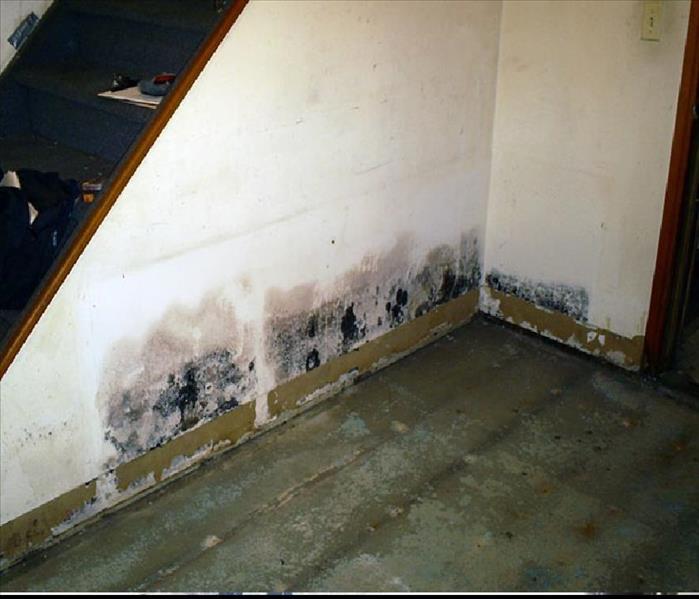 Mold growing on a wall of this family's home.
Mold growing on a wall of this family's home.
Most people think that the issues related to Mold and its tiny spores are not a problem that you have to worry about during the cold months. Unfortunately, this is not true and mold prevention should be always in the mind of each business owner or home owner at any season.
Prevention is the best solution when it comes to keeping your homes and family safe. Here is a list of things that you can do throughout the winter months to prevent mold growth and keep associated health issues away.
- Keep humidity monitored. Mold will grow easily when the relative humidity is greater than 70%. Both the humidity level and the temperature of the rooms in your house need to be monitored. You don’t want to keep your house to moist or too cool throughout the winter. If you can keep the temperatures balanced between the different rooms throughout your home, you can easily prevent mold growth. There are many different options to balance and monitor conditions in your home so check out your local hardware store or search online.
- Make sure there is a good circulation maintained in your home. Use fans or even open a window when the weather allows – especially when showering, washing dishes or any time moisture is brought into the home.
- Inspect your basement for moisture. If you find moisture, perform an inspection of your drainage system. Repair any broken appliances or pipes and replace any mortar that looks cracked or defective.
- When the temperatures drop below freezing, prevent mold growth by insulating pipes both inside and outside. By doing this, you can prevent breaks and cracks which can allow moisture in once the temperatures return.
- If you notice condensation on pipes, walls or windows, act quickly. Dry out the area and determine if there is a leak or if the condensation was created from humidity. Rectify the situation and continue to monitor for additional moisture in the following days and weeks.
- Check all of the seals around your windows and doors. Replace any that appear to be compromised or damaged. This is an easy and effective way to prevent mold growth and should be performed periodically.
- Keep the leaves and other decaying debris cleaned up in your yard – especially around your home. Don’t allow wet leaves or grass clippings to accumulate and sit in your yard. Remove them often until all of the leaves have fallen for the season.
- Dust and clean regularly throughout the entire winter months as mold loves dusty surfaces. Be sure to pay extra attention to the entry ways or areas where muddy and wet boots are taken off in the home.
The key to prevent mold growth is to keep everything as clean and dry as possible. You can do this through maintenance of your home and temperature control. We hope these recommendations help you to keep your family and your property away from mold and the issues related to it.
Why is it so important to dry water damage quickly? Mold growth is your answer.
11/12/2017 (Permalink)
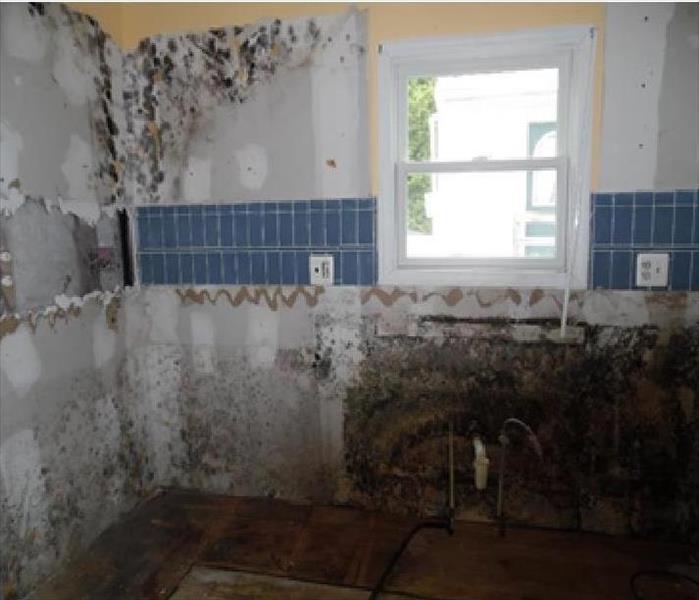 Mold Growth
Mold Growth
A water damage can be a costly and unexpected issue that could happen at any time. We know about this because we have helped multiple customers in our area who never thought that they would have to deal with a water loss and the possibility of mold growing in their property. Thanks to our experience with water loss remediation, we know that once a customer call us and let us know that they are having this type of issue, we need to act fast! Not only because the customer wants his property free of water, but because every minute counts when trying to stop mold from growing and becoming a worst problem.
Most of us know that mold can grow easily if it finds the proper conditions, such as a humid environment and some dark space. Therefore, after a water damage, flooding, or any type of water loss, it is important to the start the drying process as quickly as possible. We have the proper tools to get hands on as soon as we arrive to the customer's property. Usually the first thing that we do is to stop the water source, we identify the type of water (to decide the best course of action), we inspect the property, and (depending on the job and the amount of water that we are handling) we remove items, carpets, etc. before we start the water removal process. Once we complete the first part of the remediation, we set up extraction vacuums to remove the excess water. In the mean time we determine the type of drying equipment that we are going to use next. Our highly-trained technicians will determine how many air movers and dehumidifiers are needed or if any specialized equipment, like air scrubbers, will need to be in place in order to avoid any mold spores to spread. Throughout the drying process we will be monitoring the levels of moisture and will make sure to clean any contents that can be restored. Later in the process we will make sure to use the most effective sanitizing treatments to clean your property and avoid mold to appear in the picture. Finally, if needed we will start the restoration to pre-water damage condition. Even though we tried to summarize the process here, we want to clarify that it takes a couple of days to get your property dry and to fix the issue.
Water damages are a common issue and you need professionals that know how to handle it. Also, you need a company committed to be there on time and who understand the importance of getting the job done before mold takes advantage of the conditions and becomes a bigger problem. We are that company give us a call and we will help you to handle any water loss and prevent mold. SERVPRO of Dover/Stillwater 973-810-2825.
Do you have a mold problem? Here are the steps of how to handle it.
11/9/2017 (Permalink)
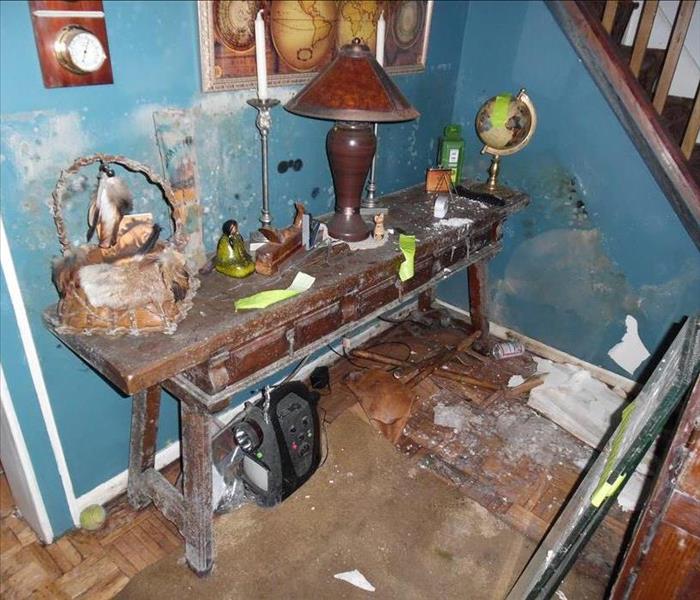 Learn how to handle a mold problem.
Learn how to handle a mold problem.
If you suspect that there is mold in your home (even if you cannot see it), maybe because you have been feeling sick without any reason, or maybe because there is a particular smell, you should be proactive and do something. We will explain the steps that we recommend that you follow if you think that you have a mold problem.
- This first step is important. You should get a professional home hygienist to inspect your home. In order to treat the problem you will need to know the type of mold and the amount that you will be fighting. A professional company can provide those results and sometimes guide you in which is your best option of treatment, if it is fine to take care of it yourself or if you need a professional remediation company to do so. Make sure to agree that a final testing is done after any remediation is completed, in this way you will make sure that your efforts to eliminate mold were successful. This should be done by two separate companies so that there is no conflict.
- Find the cause of mold and make sure it is repaired. The last thing that you want is the mold to come back after you cleaned it. Therefore, is important to identify what caused it in the first place and to fix it.
- We recommend to contact your insurance company and find out if your policy covers any mold removal. This is a step that could save you money.
- Base in your Mold test results you will have to decide if is it safe to clean and remove the mold yourself, or (as we recommend it) if you are going to hire a professional mold remediation company. A company like ours, SERVPRO of Dover/Stillwater, is specialized in this type of remediation, we can make sure to eliminate the problem, avoid to spread the mold to other areas, and clean everything while following safety guidelines so no one gets sick from breathing mold during the process. Make sure the company that you choose has a good reputation and are committed to help you to solve the problem.
- Once the mold remediation is done, make sure the mold hygienist comes back to have a final testing done. Base on their results you will know if it is safe to complete the process or if you need to do something else.
- Finally, we recommend to take preventive measures against mold. Make a habit to inspect your home, your appliances, and those places where water can become a problem in your property. Â Also if you have an area high humidity like a below grade basement have an auto pump out dehumidifier.
If you have a mold problem, we can help. We have managed multiple mold remediation jobs in our area. We have the equipment, a highly-trained team, and the experience to guide you and help you to handle this issue. Give us a call and we will be happy to help you. SERVPRO of Dover/Stillwater 973-810-2825.
Mold Problem In Your Attic? Here Are Some Of The Main Causes.
10/25/2017 (Permalink)
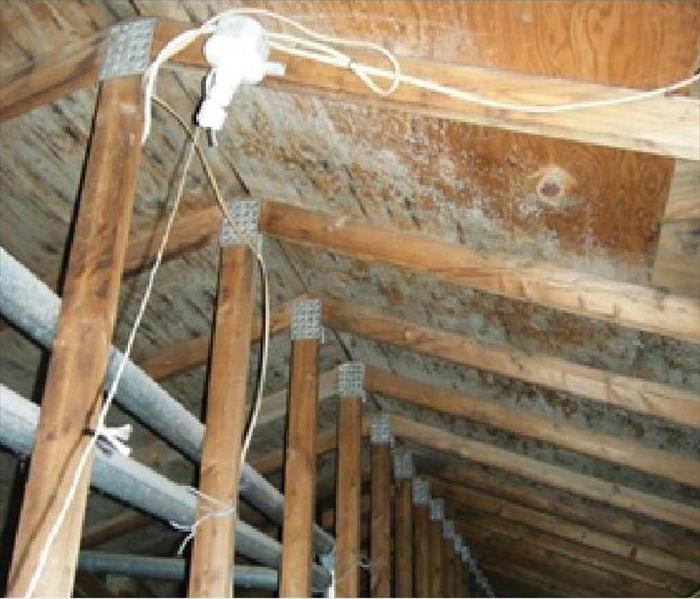 Mold in your attic could be hiding without anyone noticing it.
Mold in your attic could be hiding without anyone noticing it.
If you suspect that you have a mold problem in your attic, you should know that it is important to fix it sooner than later, and that it is also necessary to find the source of the problem to avoid the mold to come back. Some causes of mold are easy to identify while others are less obvious, the important thing is to remember that all mold problems are due to moisture in the room or in the environment. Therefore, the first thing to do if you have a mold problem in your attic, is to identify if there is a water problem in it and fix it, if not you will need to find what the source of moisture is and get it under control. To give you a better idea of what to look for or what to ask your professional to look for, we will discuss the three main causes of mold in attics.
1-Ventilation: Poor ventilation in your attic will set the perfect environment for mold to grow. Have you ever thought about where the moisture produced by your daily activities (showering, cooking, etc.) goes to? The answer is the attic, the air travels to the attic and if there is not proper ventilation there, the moisture gets trapped and mold problems will arise. Another recommendation to have proper ventilation is to not to cover your vents with insulation.
2- Exhaust Fans & Vents: Your house probably has multiple exhaust fans and vents with the purpose of pumping moisture out of each room where they are located at (bathroom and kitchen exhaust fan, dryer exhaust vents, etc.). This is a great help to keep your home environment healthy, but it is really important that you make sure that the moisture ends outside of your home and not in your attic. This could lead to mold growth in an area where it could hide for a while before you or a member of your family will notice it.
3- Leaking Roofs: There are a few things to look at when you are checking for leaking roofs in your property that could lead to mold. You should check: Roof Valleys (vulnerable to roof leaks), discoloration of insulation and wood, check for condensation if you have installed a vapor barrier, and check for any places that could hold water after a storm.
Since attics are not a popular place in your home a mold problem could be hiding without no one noticing. Therefore, it is important to check once in a while and to know what to look for to avoid any mold problems. If you have an issue with mold in your attic let us help you, we are professionals and we will make sure to control the situation and find the source to avoid that the mold come back. We are SERVPRO of Dover/Stillwater, our number is 973-810-2825.
Preventive Measures at Home to Avoid Mold
10/23/2017 (Permalink)
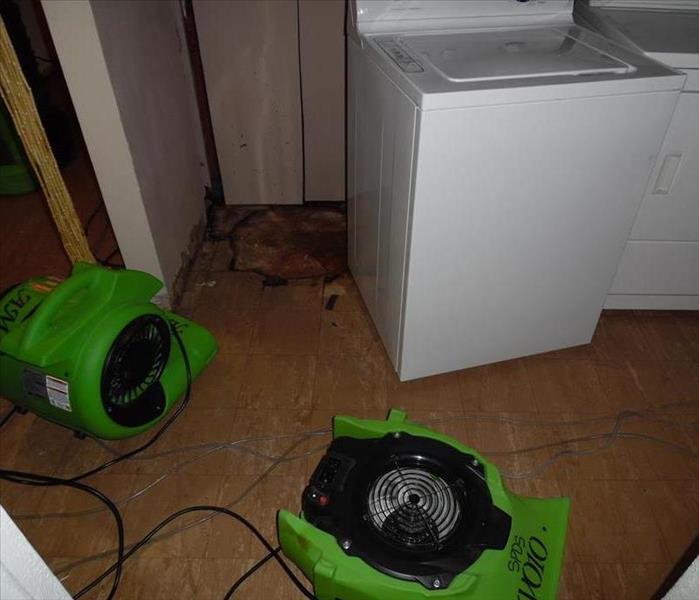 Prevention is key to avoid mold issues.
Prevention is key to avoid mold issues.
Mold does not need much in order to grow, basically it needs a moist environment. If you are a homeowner you know there could be many places in your home where this dangerous fungi could grow and spread. Knowing some places where it can hide it is the first step to prevent it. Here we are going to talk about some main sources of water damage that could increase the chances of your home being invaded by mold and we will mention some preventive measures that could make a big difference and save you some time and money.
One of the main places for water damages in your home is the water heater. It is very important to know how much water is stored in it and it is recommended to completely drain the water heater every six months. To do this you need to: Turn off the electricity supply (or gas), attach a hose to the drain valve and make sure to attach the other one to a bucket, let the water drain until you consider that it is clear, close the drain valve and open the water valve to allow cold water to refill the tank, and now turn on your electricity or gas supply. These simple steps may help you to prevent a water damage and therefore the possibility of mold growing in your home.
Another place to inspect before mold gets there are the areas in your home where there is tile grout and water is present. For example, in the shower. It is essential that grout in these areas is applied correctly and to check it regularly. If you notice that is not right we suggest that you replace it if possible. Make sure that the area is clean and to use your bath fans during and after your shower to flush out the moisture and in this way prevent mold from growing.
Other places that you should check regularly is the washer machine. The washing machine hoses should be turned off after you use the machine to prevent any water leakages. Also, it is a good idea to leave the door of your washing machine open to let it dry and avoid damp conditions. Once a month you should run a preventive machine wash cycle with a mix of hot water/bleach and without clothes. Finally, remove any wet clothes from the machine as soon as they finish.
These are only a few recommendations and steps that you can follow in order to prevent mold in your home. If you ever have an issue with mold call the experts and let us handle it. We are SERVPRO of Dover/Stillwater 973-810-2825.
Dont let it wait to remediate
6/24/2015 (Permalink)
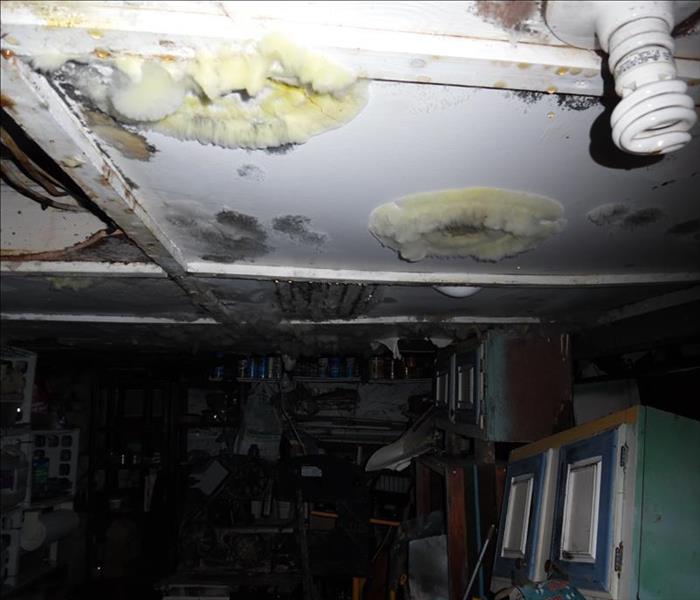 Sometimes it seems to expensive to call for help. I assure it is cheaper to call us when it small than to wait.
Sometimes it seems to expensive to call for help. I assure it is cheaper to call us when it small than to wait.
We arrive on site and the customer tells so often that they have seen the mold for a while and tried to clean with bleach. All of these are mistakes. Please call us we can help. We will kill the mold and properly mitigate it and not use something as caustic as bleach. It is very strong and does not kill mold. We are experts in this field and I assure you that if you wait it gets more costly by the day.






 24/7 Emergency Service
24/7 Emergency Service




